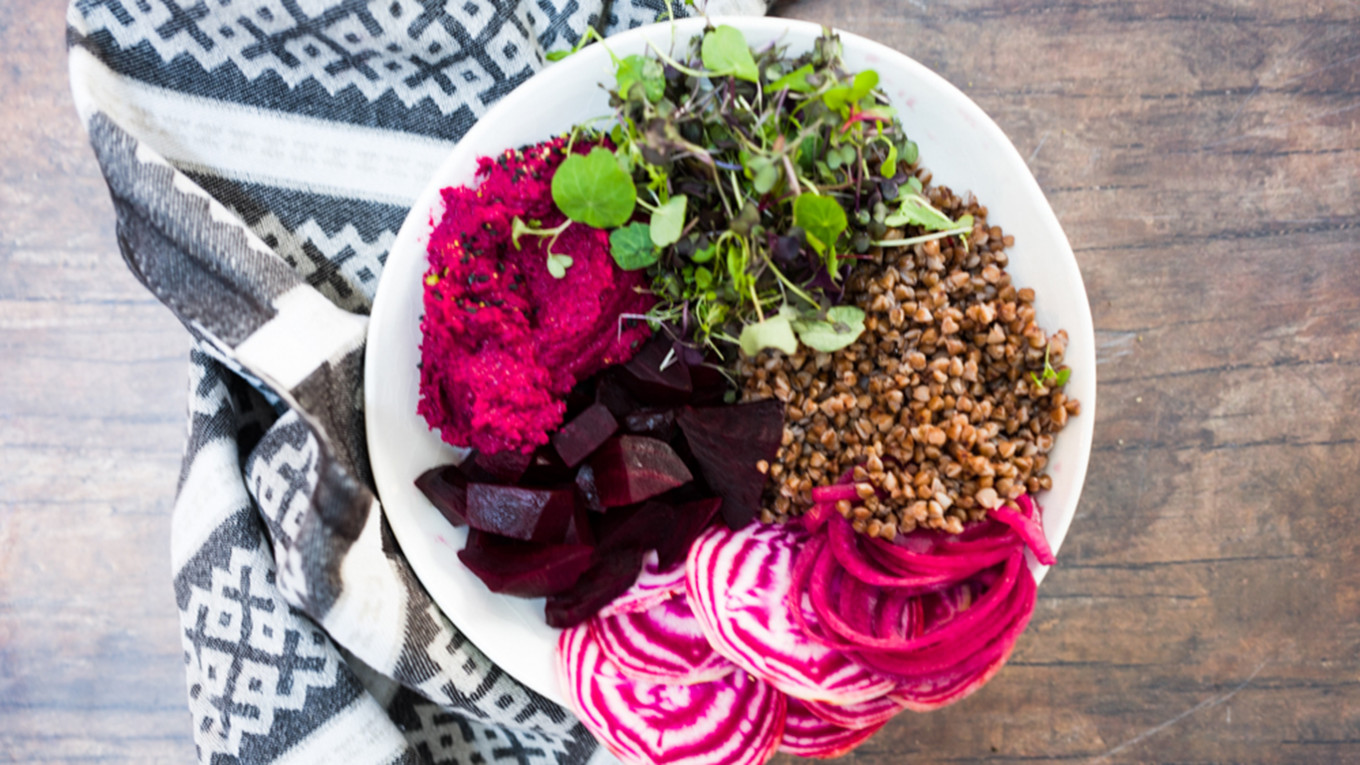Beets are a lot like Russia.
From the outside, beets can appear distinctly unappealing, particularly if they are encrusted with globs of dirt, lolling about in vegetable crates looking misshapen and awkward. This is how I first encountered them in my neighborhood “Produkty” store in Moscow around 1994. Any flicker of interest I had in them was immediately quashed by the surly saleswomen who stood guard, with suspicious eyes and stubby fingers caked with the same dirt and broken nails with chipped polish.
Hardly appetite-whetting.
“Too much trouble,” I would say to myself. “And I certainly don’t have a knife sharp enough to penetrate that impermeable exterior.” And I would move on to something easier: carrots, perhaps, or parsnips, or the inevitable potato.
And so it took a long time to find my way into the beet. It was like trying to find the main entrance to the Kremlin Armory Chamber, that repository of Faberge Eggs, Crown Jewels, and Peter the Great’s boots: you know it must be there, but they really make you work to find it. But finally I found them as nature meant us to: plump, inverted tears of rich dark purple, sprouting elegant stems of astonishing shades of mulberry, violet, and magenta, and lush pale green leaves. Mother Nature knows her business.
It is patently ridiculous to state that beets are the backbone of Russian cuisine; one might as well say that bears dance in the streets, and all Russian men are drunkards. So, I won’t. But one can make the case that beets are an excellent example of the kind of hardy root vegetable that has proven blessedly immune to Russia’s relentlessly harsh climate and frequently dodgy economy. For these, you need a sturdy vegetable that can endure nine months in a root cellar and still pack an incredible nutritional punch.
Beets are best known for their starring role in Russian (or Ukrainian) Borsch, the rich purple beet soup that is at once tangy and sweet, and made its way across the Atlantic to become a deli staple as a cold soup. For those who know a bit more about the quirkier aspects of Russian cuisine and culture, beets are synonymous with that classic New Year centerpiece “Herring Under Fur Coat,” the unlikely pairing of herring, hard-boiled egg, beets, and mayonnaise that only makes sense if you’ve been raised on it.
The rich umami flavor of beets and their considerable nutrients (beets are high in fiber and rich in folate, manganese, potassium, iron, and Vitamin C) make them a natural substitute for meat for vegans and vegetarians. Russia’s more “woke” eateries are now featuring items such as “beet tartare” or beet-filled pelmeni. Beet juice is popular for its antioxidants or just its lovely vibrant color and pairs incredibly well with kale, berries, carrots, ginger, and turmeric in juices and smoothies.
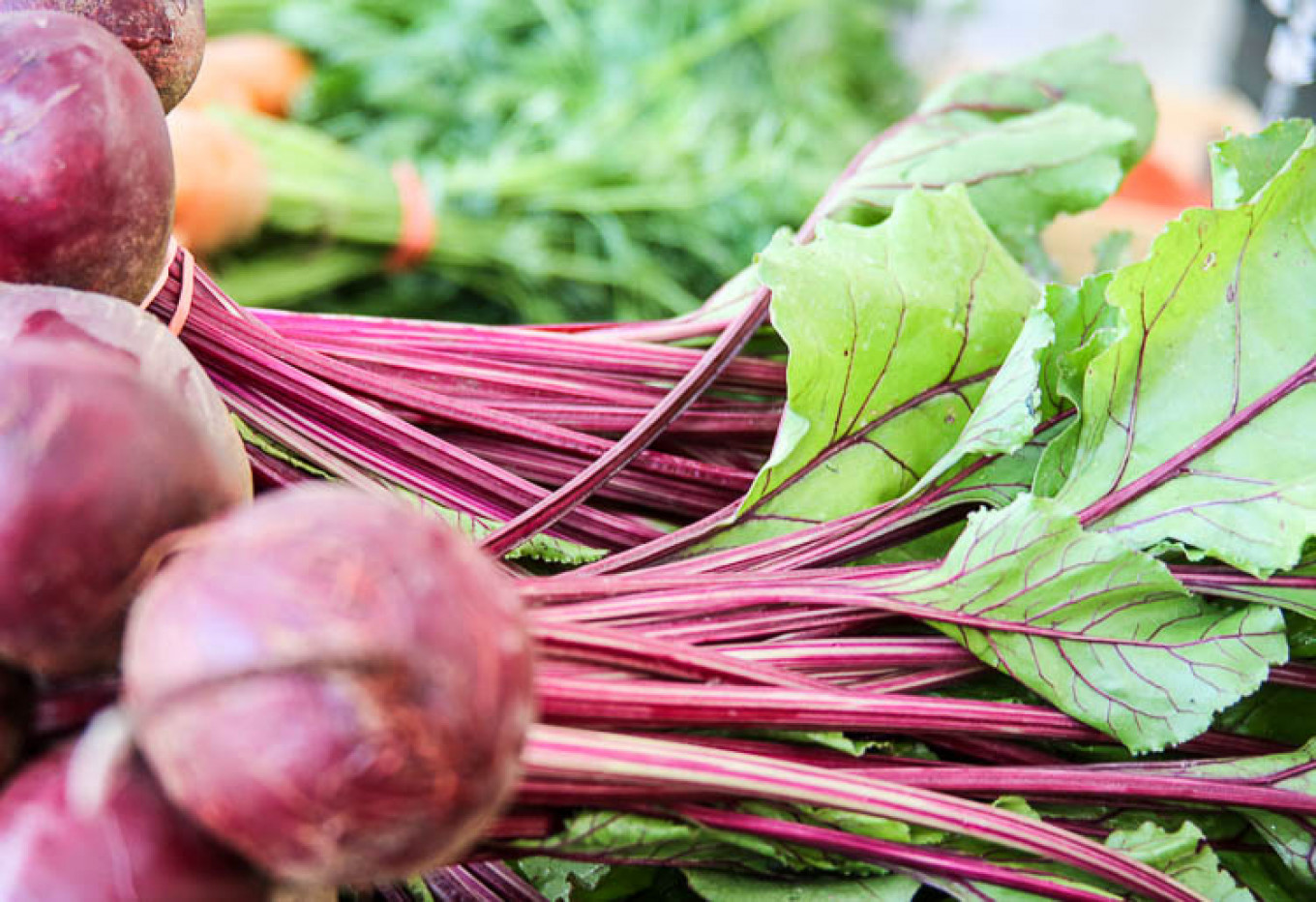
How to shop for beets
For the best fresh beets, head to a farmers’ market. Choose beets that are on the smaller side — somewhere between a golf ball and a tennis ball. Beets should be firm to hard and their skin unbroken. The freshest beets will have their stems and leaves still attached — avoid buying beets that have already been peeled and sliced. The exception to this is buying already roasted beets in jars, which is popular in France and Belgium. Store beets in a cool place until you are ready to use them. Roasted beets will stay fresh up to a week in the refrigerator.
Preparation
The best way — the only way really — to prepare beets is also the easiest: crank your oven up as far as it will go, wrap your scrubbed beets in a foil pouch and roast them until the tip of a knife eases gently into the interior of the beet (about 30-45 minutes). Cool to room temperature, peel them and then see what magic has been wrought: the natural sugars in the beet caramelize, which deepens and softens the flavor. The texture is pliant but not mushy, the texture silky and smooth.
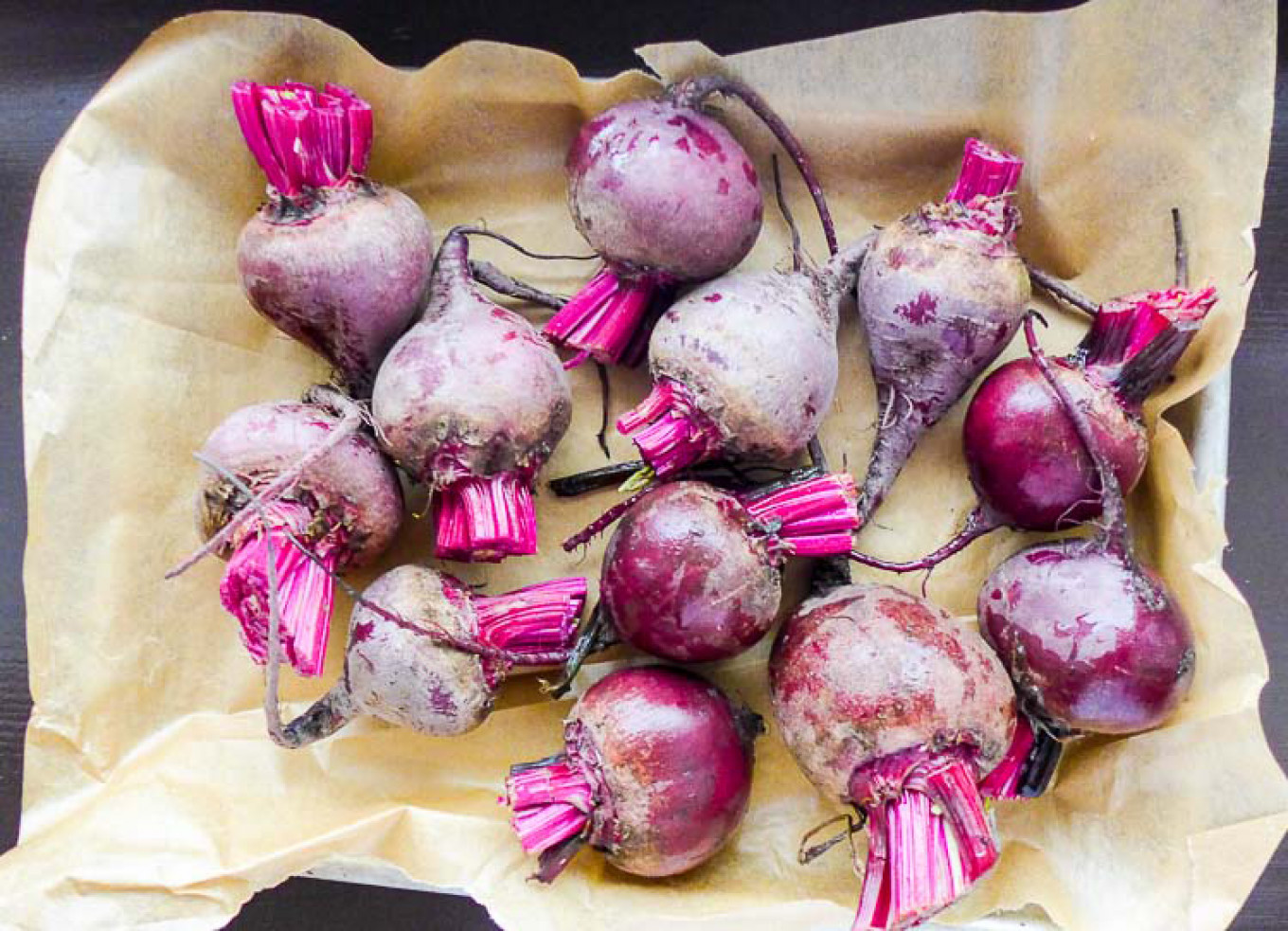
Pairing
Beets have a distinctive flavor, but one that pairs and plays well with all kinds of other flavors.
Fruits and spices: Beets do well when spiked with contrasting flavors. Try coriander, chili peppers, sumac, dill, cilantro, mint, tarragon, orange zest, pickled mustard seed, red wine vinegar and olive oil, pomegranates, and pomegranate syrup.
With fish: Try my Beet-Cured Salmon for a special occasion or combine beets with mashed celery root or potatoes for a puree that is sweeter and more complex than most conventional sides. This pairs well with any roasted or poached fish.
With pork: Grate a roasted beet and toss with braised red cabbage for a new twist on a classic Eastern European side to roasted pork shoulder or pork chops.
With dairy: Magic things begin to happen when beets meet dairy. Yogurt, sour cream, creme fraiche, and soft goat cheese are excellent pairings, as is a salted sheep cheese such as bryndza or ricotta salata. For a festive dip, puree roasted beets and swirl them into a mixture of yogurt and sour cream.
In salads: The classic combination for beets in salads is arugula, goat cheese, walnuts, and beets. But beets also do well with other peppery greens such as watercress and pair well with tangerines, pistachios, radishes, pickled red onions, and grated carrots.
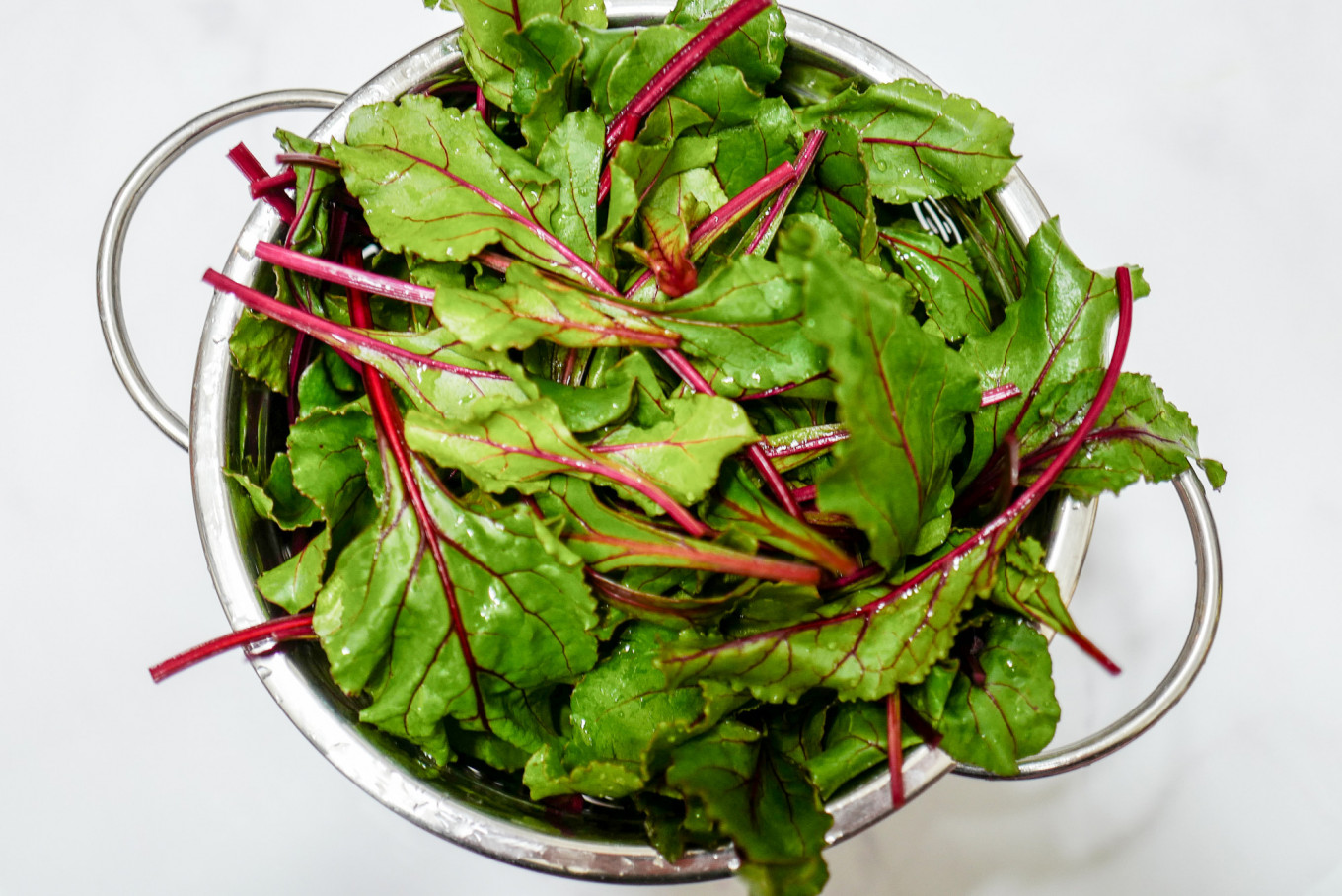
The biggest mistake
Don’t discard the greens and stems. Beet greens are on the bitter side and can be used raw in a salad in place of radicchio or red endive. Sautéed in olive oil and garlic, their flavor warms up to something akin to Swiss Chard and should be used similarly. Seasoned with a hint of balsamic or red wine vinegar, they make an excellent side dish. Topped with a poached egg, they are a heavenly brunch main dish. In a grain bowl, they add a welcome deep flavor and silky texture. Chiffonade them into thin strips to add to borsch or a salad.
Strip the leaves from the stems and wash thoroughly to dislodge all grit, and then dry in a salad spinner.
Beet stems should be treated like celery: they are an excellent addition to any mirepoix (mixture of aromatics) and are essential to borsch.
They will soften if sautéed but still retain a satisfying crunch. You can also quick pickle beet stems in vinegar and salt for piquant nuggets that will greatly enhance the flavor of a beet salad or side dish.
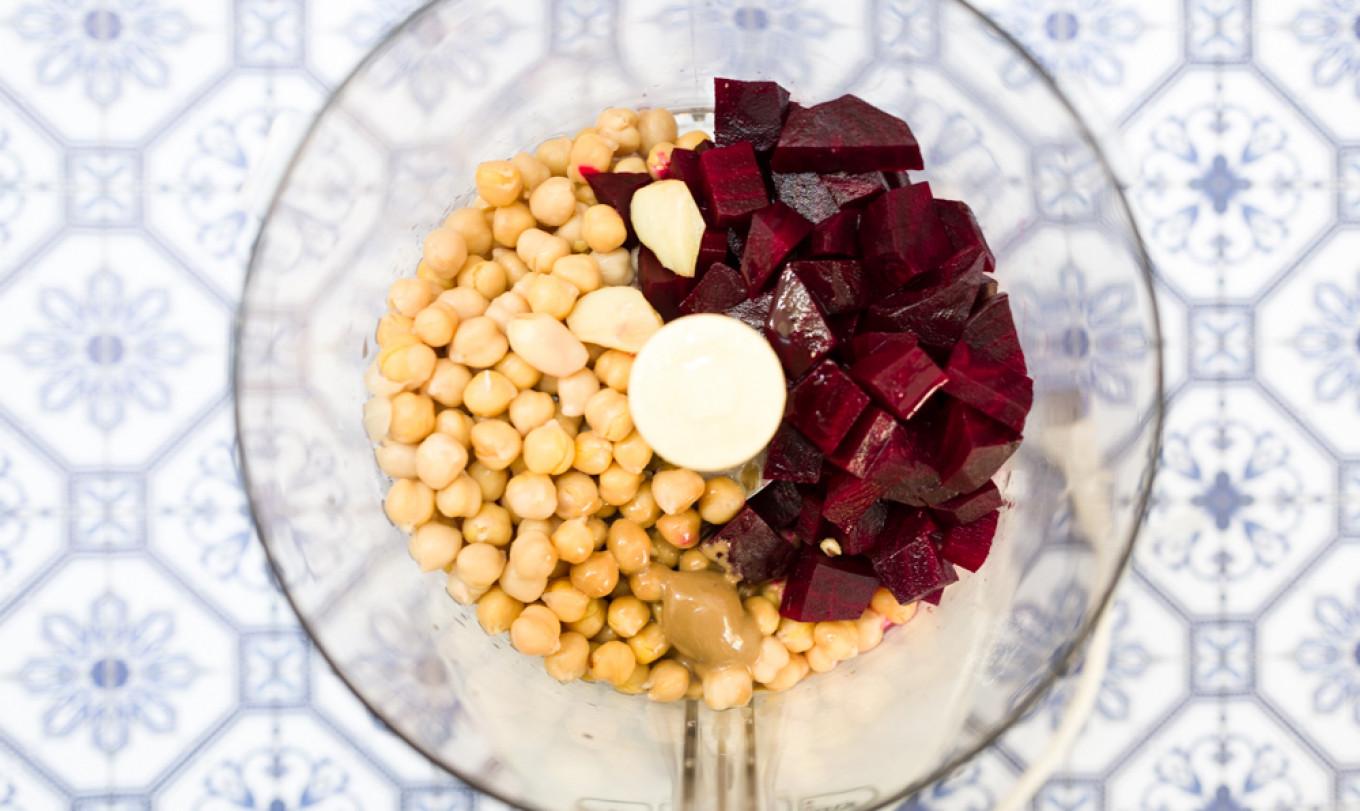
Beet Hummus
Hummus is (finally) having a moment in Moscow — so much so you’d think Russian hipsters invented it. So, for them, here is a dish that pairs the traditional with the innovative and edgy; reminiscent, dare one say, of Russia herself!
Ingredients
- 1 large beet or 2-3 small ones, roasted, peeled and diced
- 1 tin (439 grams or 15.5 oz) cooked chickpeas, drained and rinsed
- 2 Tbsp tahina
- 2 tsp pomegranate syrup
- 3 cloves garlic
- Juice of one lemon
- ¼ cup (60 ml) olive oil plus more to garnish
- ¼ cup (60 ml) raw pistachios (optional garnish)
Instructions
- Prepare the beet(s) up to 2 days in advance by roasting them in a foil pouch at 450ºF (220 Cº). Cool to room temperature and then peel.
- Combine all of the ingredients into a food processor fitted with a steel blade and combine to the desired consistency. If the hummus is too dry, add water in 2-Tbsp increments.
- Place into a non-reactive serving dish and chill, covered for at least 1 hour. The hummus will keep up to a week in the refrigerator.
- Toast the pistachios in a skillet until they are just beginning to shimmer. Grind in a food processor or coffee grinder. Sprinkle over the hummus.
Notes on serving
Other garnishes include roasted beets diced finely, pumpkin seeds, walnuts, chia seeds, sesame seeds, toasted coriander seeds. Drizzle with olive, walnut, or pistachio oil.
Serve with crackers, chips, crudités, including raw beets sliced very finely with a mandoline, bread, especially a loaf of dense rye bread. Add a dollop of beet hummus to grain bowls, rice dishes, on top of avocado toast, or serve as a garnish, particularly with pork or salmon.
